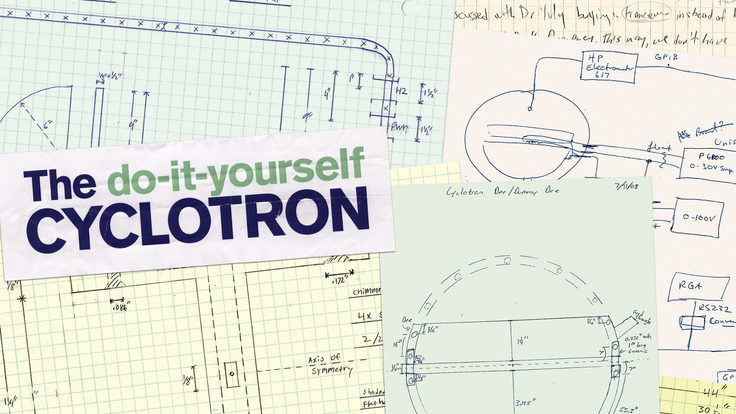
Masaki Hori of Tokyo University (left) and a colleague prepare the laser beam for the first ASACUSA experiment.
Scientists in the Japanese-European ASACUSA experiment at CERN reported today that they have measured the mass of the antiproton with nearly the same accuracy as scientists have measured the mass of its partner particle, the proton.
This will help scientists seeking to understand why our universe is dominated by matter when the big bang is thought to have created matter and antimatter in equal amounts.
The ASACUSA measurement reached a precision just below one part per billion. They found the ratio between the masses of the antiproton and the electron to be 1,836.1526736(23), in which the numbers in parentheses are the uncertainties on the last two digits.
“Imagine measuring the weight of the Eiffel tower,” said Masaki Hori, a project leader in the ASACUSA collaboration. “The accuracy we’ve achieved here is roughly equivalent to making that measurement to within less than the weight of a sparrow perched on top. Next time it will be a feather.”
From the CERN press release:
Ordinary protons constitute about half of the world around us, ourselves included. With so many protons around it would be natural to assume that the proton mass should be measurable to greater accuracy than that of antiprotons. After today’s result, this remains true but only just. In future experiments, ASACUSA expects to improve the accuracy of the antiproton mass measurement to far better than that for the proton. Any difference between the mass of protons and antiprotons would be a signal for new physics, indicating that the laws of nature could be different for matter and antimatter.
To make the measurement, scientists trapped antiprotons in helium atoms. When trapped in an atom of helium, an antiproton replaces an electron, occupying its orbital with about the same binding energy. Scientists fired a pair of laser beams at these atoms, destabilizing them and sending the antiprotons crashing into the helium nuclei to be annihilated. Scientists could interpret the mass of the antiproton compared to that of the electron by comparing the different laser frequencies that would cause this destabilization.
Scientists on ASACUSA conducted a similar experiment in 2006 using a single laser beam. However, they found the beam caused the atoms to jiggle around, hurting the accuracy of their measurement. The additional beam served to cancel out the jiggling effect.
Read the press release or read the article in Nature.






